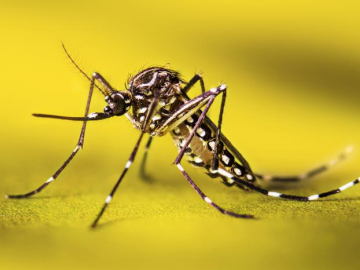A New Mindset for Health Security
As I write this commentary, we’re seeing Zika infections in India, H1N9 in China, cholera in Somalia, to name just a few. These diseases do not only claim lives, they also disrupt social fabric and destroy local economies. West Africa’s 2014 Ebola outbreak claimed 11,310 lives and cost $2.2 billion in GDP in 2015 alone. What are governments doing to prevent, identify, and contain infectious disease outbreaks to protect their citizens and their economies—and how must they change to succeed?
A report from the World Bank’s International Working Group on Financing Preparedness, chaired by Harvard’s Peter Sands responds to that question. Titled “From Panic and Neglect to Investing in Health Security,” it offers an integrated framework of 12 recommendations to approach financing pandemic preparedness at a national level. The report aims to provide a roadmap for countries to develop a prioritized and costed national plan to buttress universal health security, create an investment case and change management strategy for buy-in by relevant stakeholders, and to locate appropriate funding exploring various financing mechanisms.
The report reinforces a One Health approach, recommending that national preparedness plans be built around gaps identified in human and animal health systems, as assessed by WHO’s Joint External Evaluation (JEE) tool and World Animal Health Organization’s (OIE’s) Performance of Veterinary Services Pathway. This is key given that an estimated 60-80% of infectious diseases come from an animal host. The WHO’s forthcoming Guidelines for Development of National Action Plan for Health Security (NAPHS) (2017) will explore this topic of national plans further.
The true focus of the report lies in enabling national governments to share the responsibility and impressing the value of robust health security beyond health ministries to include the finance ministry, the private sector, and population at large. This, however, will require a major shift in thinking. Report authors have developed a 31-page deck on change management and investment case in health security (Appendix D) that includes an argument bank and case studies. For example, “Asian economy is estimated to have lost $60 billion as a result of SARS epidemic, which was mainly driven by losses from tourism and consumer confidence.” Authors have estimated that financing improved preparedness could cost less than $1 per person per year in countries with well-functioning health systems and will cost more if basic investments in health systems are needed. How to procure this health security investment? Various financial mechanisms were proposed including increasing fiscal space by exploring earmarked taxation, targeted international development assistance (IDA), engaging the private sector (through mandatory or voluntary corporate social responsibility), and buying insurance coverage.
To incentivize countries to invest in health security, the report proposes to include preparedness indicators into World Bank’s internal tools (i) to determine IDA allocation formula and (ii) to identify priorities through which a country may achieve poverty reduction, as well as upgrade Pandemic Emergency Financing Facility to “PEF2.”
Strengthening pandemic preparedness will also strengthen health systems to deal with endemic diseases and antimicrobial resistance, contribute to Universal Health Coverage (UHC) and help achieve Sustainable Development Goals (SDGs) that address poverty (SDG 1), health and well-being for all (SDG 3), quality education (SDG 4), gender equity (SDG 5), and economic growth (SDG 8). National preparedness is key. In today’s globally interconnected community, we are only as strong as our weakest link.
Marija Cemma is passionate about using science and policy to protect people and animals around the globe from deadly infectious diseases. Currently, she holds a Canadian Science Policy Fellowship, a fellowship that bridges scientists into federal policymaking. She earned her PhD from the University of Toronto in microbiology and completed a global health fellowship at the WHO in antimicrobial resistance. You can follow her on Twitter: @CemmaM.
Join the thousands of subscribers who rely on Global Health NOW summaries and exclusive articles for the latest public health news. Sign up for our free weekday enewsletter, and please share the link with friends and colleagues: Subscribe to GHN
iStock




